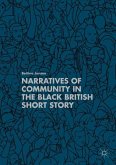This book explores the complex relationship between British modernism and the Gothic tradition over several centuries of modern literary and cultural history. Illuminating the blind spots of Gothic criticism and expanding the range of cultural material that falls under the banner of this tradition, Daniel Darvay focuses on how late nineteenth- and early twentieth-century British writers transform the artifice of Gothic ruins into building blocks for a distinctively modernist architecture of questions, concerns, images, and arguments. To make this argument, Darvay takes readers back to early exemplars of the genre thematically rooted in the English Reformation, tracing it through significant Victorian transformations to finally the modernist period. Through writers such as Oscar Wilde, Joseph Conrad, Virginia Woolf, E. M. Forster, and D. H. Lawrence, this book ultimately expands the boundaries of the Gothic genre and provides a fresh, new approach to better understanding the modernist movement.
"I was most convinced by Darvay's explanation of the gothic's instrumentality for defining Englishness in opposition to a foreign and vestigial Catholicism. This cultural and historical framing permits Haunting Modernity to address the modern and the gothic in a manner that contributes illuminating texture to these aesthetic, cultural, and political ideas." (Kate Holterhoff, English Literature in Transition 1880-1920, Vol. 61 (1), 2019)







